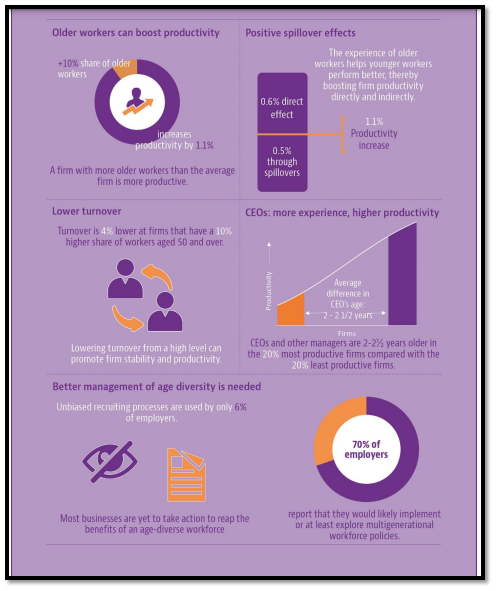Workforce Management Engaging Different Generations
Question
Task: The purpose of this assignment is to produce a substantive piece of industry-based analysis and to integrate work experience flexibly into this Report.
• One option is for students to develop an independent project in negotiations with their employer and prepare a workplace-relevant Report.
• Alternatively, students may choose a research topic of strong personal and professional interest that can utilize the experience of working in an organisation.
The project should address a specific and real management challenge or business issue, ideally relevant to the partner organisation or at least of strong personal and professional interest to the student. In so doing, students can develop and demonstrate their capacity for high value thinking and effective decision making.
Answer
1. Executive Summary
The contemporary workforce managementdynamically houses a multi-generational workforce that not only demands effective and proficient management of all the employees hailing from different generations and having varied worldview and perspectives but also calls for mitigation of the challenges that entails due to the generational gaps between the employees. Therefore, the purpose of the research study is to recognize the potential benefits and opportunities of fostering a multi-generational workforce as well as understanding the inherent challenges and obstruction embedded in the organisation’s perspectives that fail to nurture a multi-generational workforce. This would ensure a holistic and diverse opinion and insights into the tents of a multi-generational workforce. In addition to this, to help out the global business and corporate industry with an overview of the future necessity and inseparable demands of having to build a multi-generational workforce, the research study would identify and examine whether the future scopes in the global workplace facilitates the emergence and stabilisation of a multi-generational workforce or not.
2. Introduction
2.1 A brief overview of the research context
The multi-generational workforce is the reality of the contemporary business world and demands extensive exploration of the benefits for both societal and commercial benefits. However, inherent loopholes and barriers often derail and discourage the organisation to nurture a multi-generational workforce. The present research study would tailor a comprehensiveanalysisof the benefits of a multi-generational workforce and the potential barriers faced by the organisations in forming a multi-generational workforce along with recognising the contemporary scopes and demands for fostering a multi-generational workforce to uphold the nuanced advantages and the quintessential benefits of building and sustaining a multi-generational workforce.
2.2 Research Rationale
Extensive exploration of the research topic is required and important because despite knowing the potential benefits of a multigenerationalworkforce and the diversity of skills and knowledge that it could bring to the organisation only a handful of large companies having workforce strength of over 250 accountedthat only 6% of the total workforces are aged above 60. This data according to AARP’s 2020 Global Employer Survey shows there have been considerable gaps in incorporating multiple generations in the workplace (Teng, 2020). This exhibits the lacks of an effective understandingof the importance of nurturing and implementation of policies to ensure the multi-generational workforce.Furthermore, it has been observed by recent research by OCED that the organisation aren't well aware of the importance of a multi-generationalworkforce or haven’t initiated adequatemeasures to ensure age diversity in the workplace along with their talents being underutilised and overlooked. The employers aren’teven focused meaningfully to harbour an age-diverse talent pool in their organisation to sharpen the productivity force and enrich the internal culture of the organisation (Mulvie, 2021).
This necessitates this study to probe deep into the various facets of the multi-generational workforce taking into consideration the probable benefits and barriers that the organisation could face while building a multi-generational workforce along with the future scope and contemporary trends that would demand the present employers to foster age-diversity. Aboveall, yet it has been ascertained that the OCED countries could achieve and generate a $3.5 trillion boost to the GDP of the countries in the long-term if they attempt to offer employment opportunities to the staffs aged over 55 and effectively retain their intellectual capital (OECD, 2021). This propelled, even more, to deal with the topic to recognize and evaluate the significant frontiers concerned with multi-generational engagement in the organization to reap the utmost benefit from the evolving workforce phenomenon. The chosen research premise could be further validated through the fact all the OECD countries by 2050 would have an estimated 180 million aged people over 55. This implies their growing and dominant presence in the business sphere and calls for effective harboring of this magnanimous human capita; besides nurturing the young talents for future prosperity in the business(pwc, 2021).
2.3 Research Questions
Now, based on the research purpose and rationale, the research questions have been formulated that attempts to captures and answers essential and relevant questions structured out of the research premise.
- What are the benefits of having a multi-generational workforce?
- What hinders the facilitation of a multi-generational workforce?
- Do invest and harnessing a multi-generational workforce would benefit the organisation in the contemporary world or does the present global situations offers the organisation the scope of capitalising on the multi-generational workforce to reap the benefits sooner?
2.4 Literature review
2.4.1 The variegated dynamics of a multi-generational workforce
As Gourani (2019), segregates the generations to the Silent generation (1925-1945), Baby Boomers (1946-1964), Generation X (1965-1980), Generation K (1977-87), Generation Y also known as Millennials (1981-1994), Generation Z (1995-2000), and Generation Alpha (2000-2015), it shows that multiple generations have been constituting the workforce as of the present year. The multi-generational workforce though exhibits distinctive mindset or outlooks or perspectives of viewing the world, to an extent all the generations broadly value similar things. It has been ascertained by Tenenbaum(2019), that for the first time in history, the contemporary workplace has been possessing five generations of employees working simultaneously from the age of 18-80.
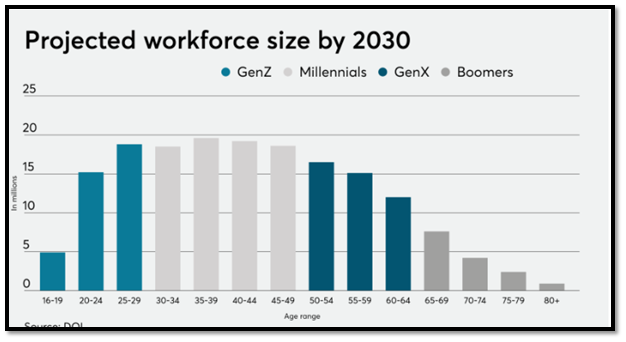
Figure 1: The projected workforce by 2030
(Source: Tenenbaum 2019)
This co-existence of the differently aged people in the same workforce inevitably implies the emergence of generational gaps at the workplace. The generational gaps taking reference from the words of Priyal&Ramkumar (2020), have the potential to induce generational conflicts and dissents if not adequately managed and catered to the varying demands of the employees belonging of different age demographics. This is because each generation brings with them new demands implicating new expectations from the industry and companies as well. Furthermore, it has opined by Field (2019), that integrating new generations with the existing and old ones could unfold a plethora of benefits for both the business sphere and the communities along with stimulating an organic development through an amalgamation of the seasoned experiences with the blooming ideas. Though not devoid of the challenges like ensuring different talent management strategies for different demographic profiling, lack of infrastructureand flexibility, incompetent training methods, personal inhibitions, and so on characterises the ineffectual propagation of the multi-generational workforce (Poirel and Coppola, 2021).
2.4.2The drivers of a multi-generational workforce
As per the observations of Lackey (2019), technological advances have reduced the generational gaps by 10 years. This is because the technological advancements have greatly shaped the work-life patterns of the people most influenced by globalisation and digitalisation which have redefined and reinforced the skill composition of the workforce as well as modified the patterns and nature of the work. In addition to this, continued social progress, high labour market participation, and effective working conditions for all types of people have accentuated the longevity of the working lives.
Even effective strategies to manage human resources could highly facilitate age diversity in the workplace. As per the observations of Hemphill, (2020), the organization endeavours to eradicate conscious or unconscious age bias by recruiting and selecting programmes that minimise age-related discriminations. This nonetheless requires the organisation to incorporate age-neutral strategies that cater to the demands, capabilities, expectations, and needs of employees of different age. Supporting this view, Muftiet al. (2021), further opines that the effective usage of the language and info-graphics in the job application also attracts the young and old aspiring employees alike. In addition to this, another driver of the multi-generational workforce that has been recognised by the authors is the use of advanced software programs to sort out the applications that don't discriminate the employees on an age basis but selects on a competency and merit basis.
In this context, Saluja& Sharma (2019), puts forth strategies that could act as potential drivers of the multi-generational workforce like offering the employees an adaptable schedule and flexible working timeline, offering effective and contingent retirement planning or phased retirement to financially aid the employees as well as invest in the wellness programmes that consider the financial, mental, and physical well-being of the employees throughout their life career.
2.5 Research design
The research design is exploratory as it explored a vast array of secondary databases and this research design helped in navigating across the different secondary sources and select the pertinent only relevant to the research context which is interpreted and analysed to gain greater insights. Different types of secondary databases have been accessed that includes newspaper articles, scholarly journal, industry publications, and other authentic published sources and reports to obtain rich and diverse strands of information on the research topic. All the secondary collected data has been interpreted and analysed by forming themes that underline the recurrent patterns of the data and information available in the existing secondary sources.
3. Analysis and discussions
3.1 Presentation and description of the collected data and material
The secondary data collected has been structured through the three dominant themes to organize the discussions.
3.1.1 The benefits entailed by a multi-generational workforce
Engaging different generations at the workplace unveiled both social and organizational benefits. According to the reportage of Belelieu and Nazeri (2020), the study published by OCED, World, Economic Forum, and AARP indicates that nurturing and investing in a multi-generational workforce will benefit the organizations with productive profitability as well as could cumulatively contribute towards the increment of the GDP per capita 19% in the next three decades. This is because the OECD countries would face an enhanced livelihood and living conditions given that the older workers are offered increased job opportunities that would increase the labour force participation.
According to the report entitled “Promoting an Age-Inclusive Workforce: Living, Learning and Earning Longer” released by OCED in 2020, it is enunciated that a multi-generational workforce has the capability of ensuring a stronger pipeline of talents, reinforcing the productivity in the organisations and heightening the organisational resilience to support all types of employees and their evolving demands. Moreover, the perseverance, patience and dedication of the older workers who have minimal chance of turnovers and maximized commitments helps in improving the workforce continuity, stabilizes the workforce as well as facilitate retention of the skilled intellectual capital (oecd-ilibrary, 2021).
Furthermore, the spillover of the knowledge, ideas and experience between the younger and older employees that accelerates the knowledge transmission and internalization that transcends generational boundaries have been one of the most dynamic benefits of a multi-generational workforce. This in turn empowers the organisation to gain access to the multi-aged and multi-skilled teams with a greater diversity of conceptual avenues and thinking vistas brought in inherently by the employees hailing from different age demographics (oecd-ilibrary, 2021).
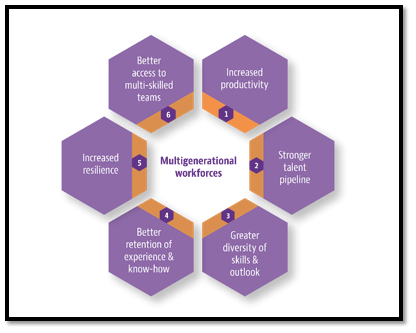
Figure 2: The benefits of a multi-generational workforce
(Source: oecd-ilibrary, 2021)
3.1.2 The challenges and barriers faced maintaining a multi-generational workforce
The kind of challenges that are caused by the multi-general workforce is diverse. One of them is that each of the generations has been different expectation and viewpoints and grows up in a different culture which ought to influence their outlook and perspectives along with the cultural differences. Often the older workers face difficulty in adapting to the evolving dimensions of the workplace and market demands while the younger employees tend to accept blindingly the traditional or the outdated organisational norms which eventually brews the seeds of generational conflicts (Gibbs, 2020).
In addition to this, it has been found that the lack of age diversity in the workplace is due to the widespreadmisconceptions and stereotyped notions harbored by organisations and employees alike. This includes notions that age would deteriorate the professional capabilities, efficiencies and strengths of abiding by the professional duties. While the young employees are perceived to be not competent for the higher positions or in that matter conceived to be lacking in leadership skills (oecd-ilibrary, 2021).Age is a key barrier for the age-inclusive parameters of the workforce that not only includes negative employer’s perceptions but also personal inhibition of the employees themselves.
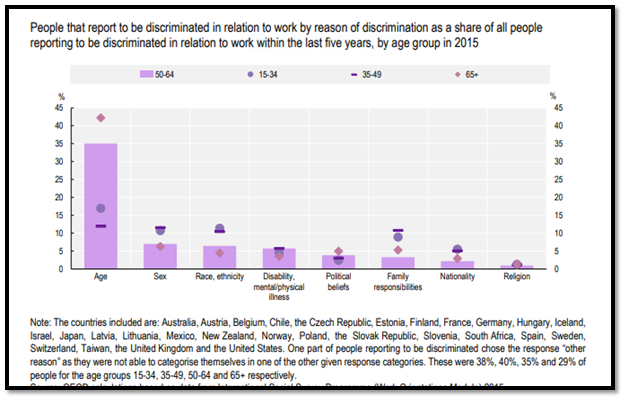
Figure 3: Age is the most challenging factor that hinders multi-generational workforce
(Source: oecd-ilibrary, 2021)
On the other hand, another data that has been got hold of is that according to the Randstadsurvey, 80% of the employees feels that the incompetence of the management to perpetuate effective communicative styles with the employees of the different age as required hinders the workplace motivations and satisfactions for the employers which in turn accentuates the staff attrition rate. Therefore, ineffective managerial tactics also seem to be a driver for discouraging the multi-generational workforce (Williams, 2021).
3.1.3 The future scope and necessity of nurturing and sustaining a multi-generational workforce
The Future of Jobs Report published in 2020, by the World Economic Forum stares that more than 4 in 10 people globally especially in the most advanced economies would like to age beyond 50 by 2050. This implies that the majority of the global workforce as well as the smaller cohorts of younger generations have been populating the workforce which in turn calls effective integration of modern techniques of managing the workforce apart from valuing the seasoned intellectual human capital (weforum, 2020). This, therefore, requires extensive and proficient handling of the workforce to facilitate productivity as well as economic success.
In addition to this it has been observed that almost 57% of the global workers want to work even after retirement age, however with only 1 in 3 companies have provisions to shift from full-time to part-time showing a huge gap in harnessing a multigenerational workforce and thereby subsequent opportunity to exploit the demands of the older workers (Belelieu&Nazeri, 2020). Moreover, AARP reveals that 83% of the organisationsvalue the multigenerational workforce to be benefiting and befitting strategy of managing the contemporary workforce.
3.2 Analyzing the collected data in sync with the research questions
Therefore, it could be stated that the multigenerational workforce unfolds a plethora of benefits. Older workers have the propensity to boost productivity at the workplace by engaging in proficient knowledge sharing with the other younger colleagues and transmitting leanings to the younger learners with their aged wisdom and experiences which also enhances the performing capabilities of the younger employees and overall increases the team performance. While the younger employees would share contemporary ideas, learning, and development of the present age to make the older generation competent and aware of the current happening and aid that experiences with age-old wisdom to accomplish organisational duties. This at the company level offers the organisation a distinct competitive advantage through relentless skills matching and knowledge exchanges that drive the intergenerational collaboration and learning with the enhancing complementariness amongst the employees of the different age (Lipman, 2017).
The benefits of harnessing a multigenerational workforce lie in the fact that it empowers the organisation in forging an age-inclusive working culture that recruits and sustains employees of different age and doesn't discriminate on the grounds of age rather prioritizes the merits and professional competencies of the employees (Mulvie, 2021). Furthermore, it could be stated that the organisations of the contemporary world irrespective of the size must invest and incorporate active measures to foster a multi-generational workforce. This is because of the unprecedented challenges and disruptor of the existing and stable mediums of livelihoods conditioned by the global pandemic Covid-19 led to huge furloughing, vacancies, job cuts, and joblessness across the different ages of the employees globally and they need a job to sustain themselves in one way or the other. In this context, if the organisations that have the financial resources to reskill the elderly workers and infrastructural resources to support them along with other necessary requirements must offer jobs to the experienced and aged people. This would not only offer the benefits of employing some needy people and provide financial assistance to them through employment but would also enrich the workforce with skilled, seasoned, matured, and dedicated members.
While capitalizing and nurturing the budding young talents on the behalf of the companies would also provide the opportunities to help out the youngsters in supporting their family financially and themselves in the trying times of pandemic as well as provide the scope of getting youthful, energetic, passionate, enthusiastic, raw and fresh talents who could be trained and developed as the professional role's demands and gain new, innovative or creative perspectives to add onto the business process coming out of blooming minds. This indicates that a multi-generational workforce could inevitably accentuate the productivity pace of the organisation in the current contemporary situation as well as empower them to possess an inclusive working environment. In addition to this, offering job roles to the employees would also attribute the organisational goodwill, exhibits its social responsibility underpinned with social equity that would eventually facilitate the strengthening of the workforce morale, built a strong corporate reputation, and imbue potential brand awareness and brand recognition.
3.3 Inference from the collected data
From the preceding discussions, it could be concluded that forming, nurturing, and retaining a multi-generational workforce would induce both organisational and social prosperity. Therefore, in the contemporary new world, the capability of the business to build a multi-generational workforce would count because it would empower the businesses to reap benefits sooner or later through perceiving and integrating the contribution and value of the workers of all age in the forms of manifold benefits. Furthermore, despite the challenges or barriers to foster a multi-generational workforce, effective endeavors underpinned with the right and strong policies and measures to engage different generations in the workplace would inevitably attribute resiliency and prosperity to the companies (Jones, 2016). Investing in a multi-generational workforce keeping in mind the inherent barriers would make the companies best positioned in the market considering the pandemic-stricken contemporary global business sphere and enable the organisations to emerge as a successful and responsible corporate entity.
4. Concluding remarks, recommendations, and implications
4.1 Summarizing the key conclusions
Henceforth, in this way, the research questions have been answered through the evaluation of the diverse perspectives of a multigenerational workforce. The multigenerational workforce not only offers substantial benefits to the organisations but also could include societal benefits to the organizations though the process and strategies of nurturing a multigenerational workforce are not exempted from the challenges or obstacles. Yet the discussions reveal that mitigation of those challenges is possible and necessary at the same time. This is because the contemporary world is ripe and hugely demanding for a multigenerational workforce to foster opportunities and profitable benefits in an all-encompassing manner.
4.2 Recommendations
Reskilling and upskilling of the employees across all the age throughout their career in the firm of facilitating life-long learning must be an integral and mandatory approach towards employee engagement and development strategy. It is recommended that the organisations should heavily invest in diversity programmes to eliminate all kinds of unconscious and conscious age-related biases. This could be extensively and more authentically achieved by delegating the responsibility to a new team of appointing committee who could be solely responsible for reducing any kind of prejudiced practices that obliterates and obstructs the formation of the multi-generational workforce. Moreover, the appointing committee should be using advanced software that sorts applications based on exclusive merits and organisational roles and not on any kinds of age stereotypes.
In addition to this, since it is evident that a multigenerational workforce is the reality and necessity of the contemporary workplace, new human resource management tactics should be brought in that would not only exploit the impending opportunities of a multigenerational workforce but also mitigate the barriers towards forming multi-generational workforce. This could be possible by introducing the re-entry or the returner programmes into top into the older worker’s skills along with the provisions for entering into the workforce even after retirement period or long gaps if skills, motivation, enthusiasm, dedication and merits of the employee permit himself. This would be underpinned with the organisational endeavours of reskilling and on-the-job training of the older employees even.
5. Reference list
Belelieu, A., &Nazeri, H., (2020). How a multi-generational workplace is key to economic growth [Online] Retrieved 26 May 2021, from
Field, M. (2019). Council Post: Work Evolved: Building A Successful Multigenerational Workforce. [Online] Retrieved 26 May 2021, from
Gibbs, R. (2020). Council Post: How To Embrace The Challenges Of A Multigenerational Workplace. [Online] Retrieved 26 May 2021, from
Gourani, S. (2019).Leading Multiple Generations In Today's Workforce, Forbes. [Online] Retrieved 26 May 2021, from
Hemphill, R. J. (2020). Enhancement of Cohesion and Engagement Through Motivational Factors in the Multi-Generational Workforce.
Jones, J. (2016). The problem: generational diversity in the modern workplace. International Journal of Business and Management Studies, 5(2), 271-278. Lackey, K. L. (2019). Leading a Multi-Generational Global Workforce: A Guide to Retaining a Highly Skilled Multi-Generational Global Workforce (Doctoral dissertation, Northcentral University).
Lipman, V. (2017) How To Manage Generational Differences In The Workplace. [Online] Retrieved 26 May 2021, from
Mufti, M. S., Qazi, A. J., Qazi, F. A., &Hussain, M. Z. (2021).Managing Multi-Generational Workforce by Leaders. Workforce managementAnnals of the Romanian Society for Cell Biology, 25(6), 1206-1216.
Mulvie, A. (2021). Learning and Development for a Multigenerational Workforce: Growing Talent Amongst Age Diverse Employees. Routledge.
Mulvie, A. (2021). Learning and Development for a Multigenerational Workforce: Growing Talent Amongst Age Diverse Employees. Routledge.
oecd.org 2021.Employers must remove barriers to work for all generations - OECD [Online] Retrieved 26 May 2021, from Poirel, G. and Coppola, M. (2021).Wrong numbers. [Online] Retrieved 26 May 2021, from Priyal, V. V., &Ramkumar, N. (2020).Resolving Generational Conflicts between Lower and Higher Order Generations Bridging Generation Gap. Drishtikon: A Management Journal, 11(2). pwc.co.uk (2021) [Online] Retrieved 26 May 2021, from Saluja, M. S., & Sharma, K. (2019).Challenges of Engaging Multi-Generational Workforce: Parameters of Engagement and Recommended Interventions. Tenenbaum, D., 2019. A new diversity concept can blend a multi-generational workforce. [Online] Retrieved 26 May 2021, from weforum.org (2020). Www3.weforum.org. [Online] Retrieved 26 May 2021, from Williams, S., (2021). Nurturing a multi-generational workforce | NTT DATA. Retrieved 26 May 2021, from 6. Appendices (Source: oecd-ilibrary, 2021) Appendix 2 (Source: oecd-ilibrary, 2021) Appendix 3 (Source: oecd-ilibrary, 2021) Appendix 4 (Source: oecd-ilibrary, 2021) Appendix 5 (Source: oecd-ilibrary, 2021)
Appendix 1
The strategies that could be used to enhance the propensity of having a multi-generational workforce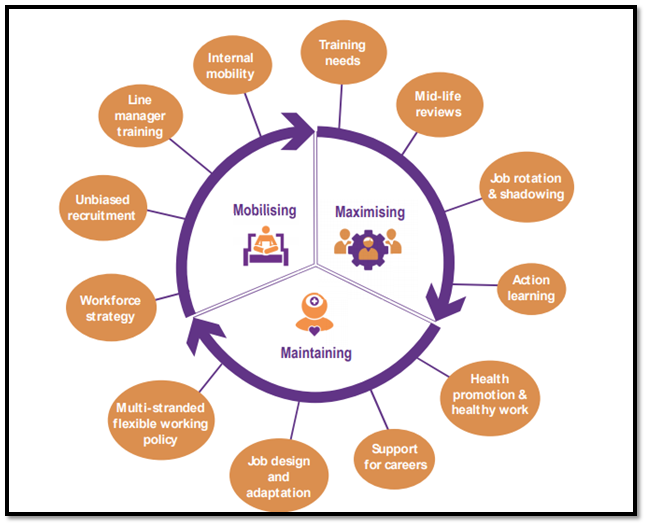
The checklist for the global employers to ensure effective recruitment, nurturing, and retention of the multi-generational workforce 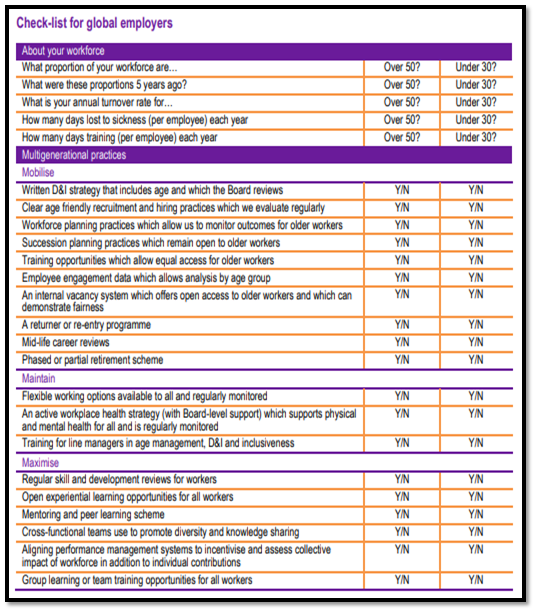
The future workforce would be better educated, multi-generational and healthier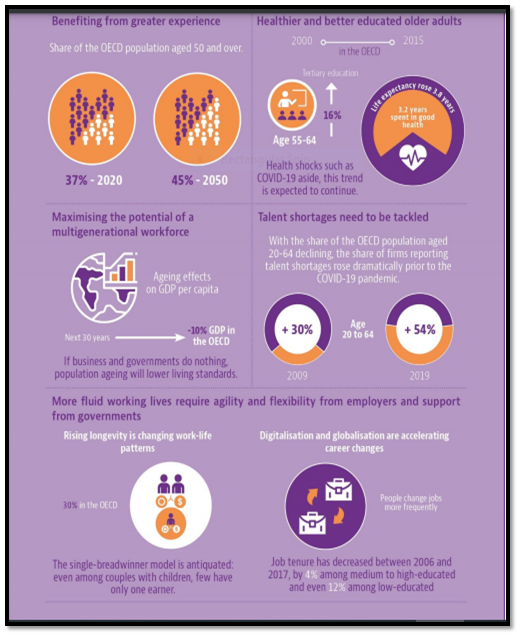
The labour market potential for the older worker is still large in most of the OECD countries
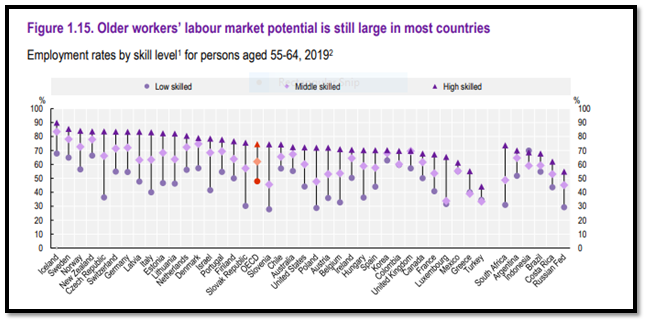
Benefits of multigenerational workforce